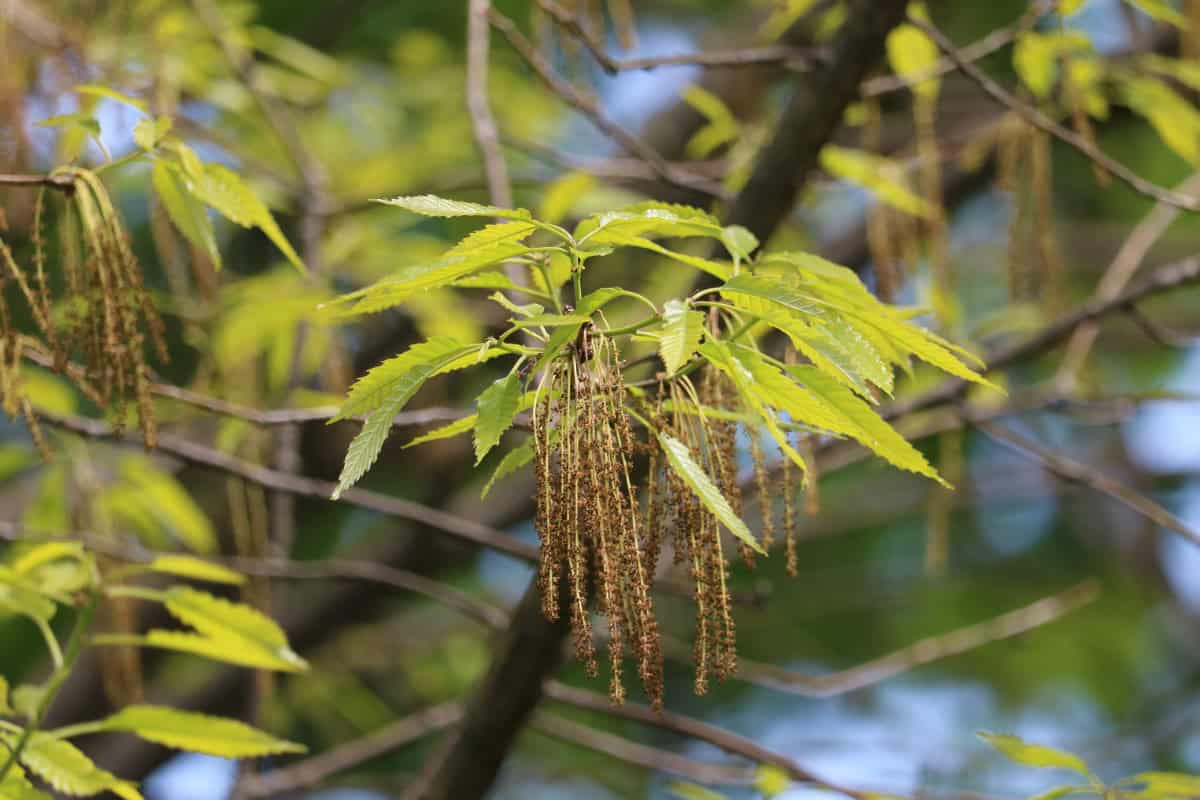
This comprehensive Chestnut Oak firewood profile explores the Appalachian powerhouse, delivering 23,000-25,000 BTUs per cord with exceptional coaling characteristics and distinctive tannin-rich properties.
Known for its outstanding heat retention and traditional use in mountain communities, Chestnut Oak offers premium heating performance with unique burning characteristics that set it apart from other oak species.
- Quick Reference Stats
- Overview & Identification: Chestnut Oak Firewood Profile
- Geographic Distribution
- Burning Characteristics
- Sensory Experience
- Processing & Preparation
- Specialized Uses
- Pros & Cons
- Best Practices & Tips
- Bottom Line: Chestnut Oak Firewood Profile
- 🌳 Chestnut Oak Firewood Profile 🔥
- Related Resources: Chestnut Oak Firewood Profile
Quick Reference Stats
- Wood Type: Hardwood (white oak family)
- BTU Rating: 23,000-25,000 BTUs per cord
- Ease of Splitting: Moderate to Difficult (3/5 scale)
- Seasoning Time: 15-20 months
- Smoke Production: Very Low
- Spark/Pop Factor: Very Low
- Scent Profile: Mild – Clean oak aroma with subtle tannin notes
Overview & Identification: Chestnut Oak Firewood Profile
Chestnut Oak stands as the coaling champion of the eastern hardwoods, offering exceptional heat output combined with unmatched coal formation that has made it legendary among Appalachian heating traditions.
In fact, when considering the chestnut oak firewood profile, few species match its balance of high heat and long-lasting coals.
This substantial white oak provides outstanding burning performance with distinctive tannin-rich characteristics that contribute to its superior heat retention properties.
The massive, deeply-ridged bark and chestnut-like leaves make identification straightforward.
Common Names: Chestnut Oak, Rock Oak, Mountain Oak, Tanbark Oak
Scientific Name: Quercus prinus (family Fagaceae)
Tree Characteristics: Large deciduous tree reaching 60-80 feet with distinctive deeply ridged, thick bark and chestnut-like leaves with rounded teeth. Produces large acorns and thrives on rocky, well-drained slopes.
Geographic Distribution
Where You’ll Find It: Eastern United States from Maine to northern Georgia, concentrated in Appalachian Mountains and piedmont regions
Availability: Good availability in eastern regions from forest management, storm damage, and land clearing operations
Growing Conditions: Prefers well-drained, rocky soils and slopes. Thrives in acidic conditions and challenging sites where other oaks struggle. Common on ridgetops and dry hillsides.
Burning Characteristics
Heat Output & Performance
- BTU Content: Exceptional performance delivering premium heat output comparable to finest white oaks
- Burn Duration: Burns extremely long with outstanding heat retention throughout entire burning cycle
- Coaling Properties: Forms exceptional coals renowned for maintaining heat longer than most other species
- Flame Characteristics: Burns hot with steady flames transitioning to legendary coal beds
Ignition & Fire Management
- Ease of Lighting: Moderate difficulty to ignite due to density – benefits from established fire
- Best Fire Stage: Outstanding primary fuel for serious heating and legendary for overnight burning
- Burn Rate: Slow, steady consumption provides maximum heat output per log
- Heat Consistency: Exceptional reliability with steady heat delivery and superior coal retention
Sensory Experience
Smoke Profile
- Smoke Volume: Very low smoke production when properly seasoned – classic white oak characteristics
- Smoke Color: Minimal, clean smoke with excellent dispersal and appealing appearance
- Smoke Flavor: Clean, mild flavor with subtle complexity from natural tannins
- Creosote Production: Very low due to clean burning and minimal resin content
Sound & Visual
- Crackling/Popping: Quiet, steady burning with pleasant but minimal crackling
- Sparking Tendency: Very low spark production provides excellent safety characteristics
- Flame Appearance: Steady, attractive flames with impressive heat radiating properties
Aroma
- Burning Scent: Clean oak fragrance with subtle complexity from tannin content
- Pleasant Factor: Pleasant traditional aroma widely appreciated by experienced wood burners
- Intensity: Moderate aromatic presence that’s distinctive without being overwhelming
Processing & Preparation
Splitting Characteristics
- Ease of Splitting: Moderate to difficult due to density and occasional twisted grain
- Grain Pattern: Generally straight but can be challenging due to density and tannin content
- Tools Needed: Heavy maul or hydraulic splitter recommended for consistent results
- Best Splitting Conditions: Split when green for best results – becomes more challenging when seasoned
Seasoning Requirements
- Drying Time: 15-20 months for optimal burning due to density and tannin content
- Moisture Content: Takes time to reach target 15-20% due to density and natural preservatives
- Seasoning Tips: Benefits from good splitting and excellent air circulation for even drying
- Storage Considerations: Tannin content provides natural preservation – excellent storage characteristics
Processing Notes
- Chainsaw Considerations: Dense, hard wood that can dull chains – maintain sharp equipment
- Bark Characteristics: Extremely thick, deeply-ridged bark that’s historically valued for tanning
- Handling: Heavy, dense wood with substantial weight requiring proper handling techniques
- Tannin Considerations: High tannin content may cause staining – wear appropriate clothing
Specialized Uses
Traditional Heating Applications
- Appalachian Heritage: Legendary status in mountain heating traditions for superior coaling
- Overnight Burning: Unmatched coal formation provides reliable all-night heat retention
- Serious Heating: Outstanding choice for heating large spaces efficiently through long burns
- Historical Significance: Traditional favorite among experienced wood burners for dependable performance
Industrial & Commercial Applications
- Blacksmithing: Historically prized for forge use due to exceptional coaling properties
- Commercial Heating: Excellent for workshops and commercial spaces requiring sustained heat
- Traditional Crafts: Superior coals valued for metalworking and traditional heating crafts
- Cooking Applications: Long-lasting coals excellent for extended cooking and baking
Pros & Cons
Advantages
- Exceptional BTU output among premium white oak species
- Legendary coaling properties – among best for heat retention
- Burns extremely clean with minimal smoke production
- Excellent safety profile with very low spark production
- Natural tannin content provides excellent storage characteristics
- Superior heat retention reduces wood consumption
- Clean burning excellent for cooking applications
- Traditional heritage and proven performance
- Very low ash production for easy cleanup
- Outstanding for serious heating applications
Disadvantages
- Moderate to difficult splitting due to density and tannins
- Extended seasoning time requires patience and planning
- Heavy, dense wood makes handling physically demanding
- High tannin content may cause staining during processing
- Limited availability outside eastern regions
- Can be expensive due to premium heating reputation
- Challenging to ignite without established fire
- May require specialized processing equipment for efficiency
- Dense wood requires sharp tools and proper technique
Best Practices & Tips
Processing Optimization
- Tool Maintenance: Keep splitting tools extremely sharp for best results with dense wood
- Tannin Management: Wear older clothes during processing to avoid staining good garments
- Timing Strategy: Process when green for easier splitting before tannins concentrate
- Storage Planning: Take advantage of natural preservation qualities for long-term storage
Fire Management Excellence
- Coal Banking: Learn coal banking techniques to maximize overnight heat retention
- Fire Building: Build substantial fire base before adding Chestnut Oak for proper ignition
- Loading Strategy: Add to established fires for optimal heat output and coal formation
- Mixing Ratios: Combine with easier-lighting woods for fire startup, then transition to pure Chestnut Oak
Seasonal Optimization
- Planning Ahead: Start seasoning 2+ years before needed due to extended drying time
- Quality Assessment: Learn to identify properly seasoned Chestnut Oak by sound and weight
- Storage Excellence: Utilize natural preservation qualities for multi-year storage planning
- Regional Sourcing: Seek out Appalachian sources for traditional quality and characteristics
Bottom Line: Chestnut Oak Firewood Profile
Chestnut Oak represents the gold standard for coal formation and heat retention among eastern hardwoods, offering legendary performance that has sustained Appalachian heating traditions for generations.
While demanding patience during seasoning and processing, the exceptional coaling properties and sustained heat output make it invaluable for serious heating applications and users who appreciate traditional wood burning excellence.
Best For: Serious heating needs, overnight burning applications, users who appreciate traditional woods, eastern region availability, and those seeking superior coal formation
Skip If: You need easily processed wood, quick seasoning, are a beginner, live outside eastern regions, or don’t require maximum heat retention
Ready to see how Chestnut Oak’s standout qualities measure up at a glance? Explore the quick reference table below for a detailed breakdown of its premium heating and coaling characteristics.
🌳 Chestnut Oak Firewood Profile 🔥
Chestnut Oak is the Appalachian powerhouse of hardwoods, delivering legendary coaling ability, exceptional heat retention, and a clean burn. Known as the “overnight coaling champion,” it’s a premium firewood choice for traditional heating excellence and serious wood burners. 🌲🏆
| Characteristic | Rating/Value | Notes |
|---|---|---|
| 🔥 BTU per Cord | 23,000-25,000 | Premium heat output |
| ⚖️ Density | Very High | Substantial burning weight |
| ⏰ Seasoning Time | 15-20 months | Extended drying period |
| 🪓 Splitting Difficulty | Moderate-Difficult (3/5) | Density and tannins challenge |
| 💨 Smoke Production | Very Low | Clean white oak burning |
| ✨ Spark/Pop Factor | Very Low | Excellent safety |
| 🚀 Ignition Ease | Moderate | Benefits from established fire |
| ⚡ Burn Rate | Slow | Extended burning time |
| 🔥 Coaling Ability | Exceptional | Legendary coal formation |
| 🌸 Scent Quality | Pleasant | Classic oak with tannin notes |
| 🍳 Cooking Suitability | Excellent | Clean burn, lasting coals |
| 🌱 Sustainability | Good | Forest management, storm damage |
| 📍 Regional Availability | Eastern US/Appalachians | Concentrated distribution |
| 💰 Cost Level | Premium | Reflects superior qualities |
| 🎯 Best Use | Overnight burning, coaling | Traditional heating excellence |
| 🏆 Overall Rating | Legendary coaling champion |
Related Resources: Chestnut Oak Firewood Profile
Last updated: 8/20/2025


